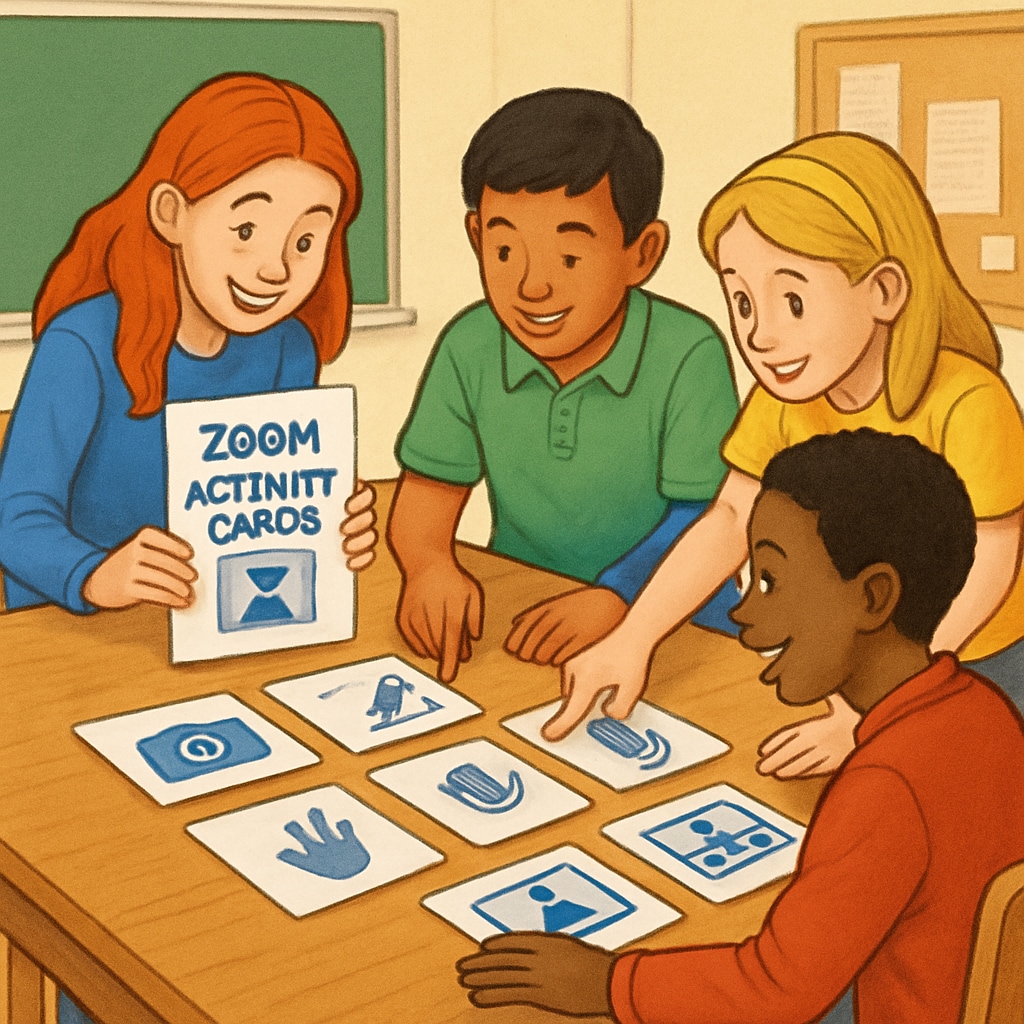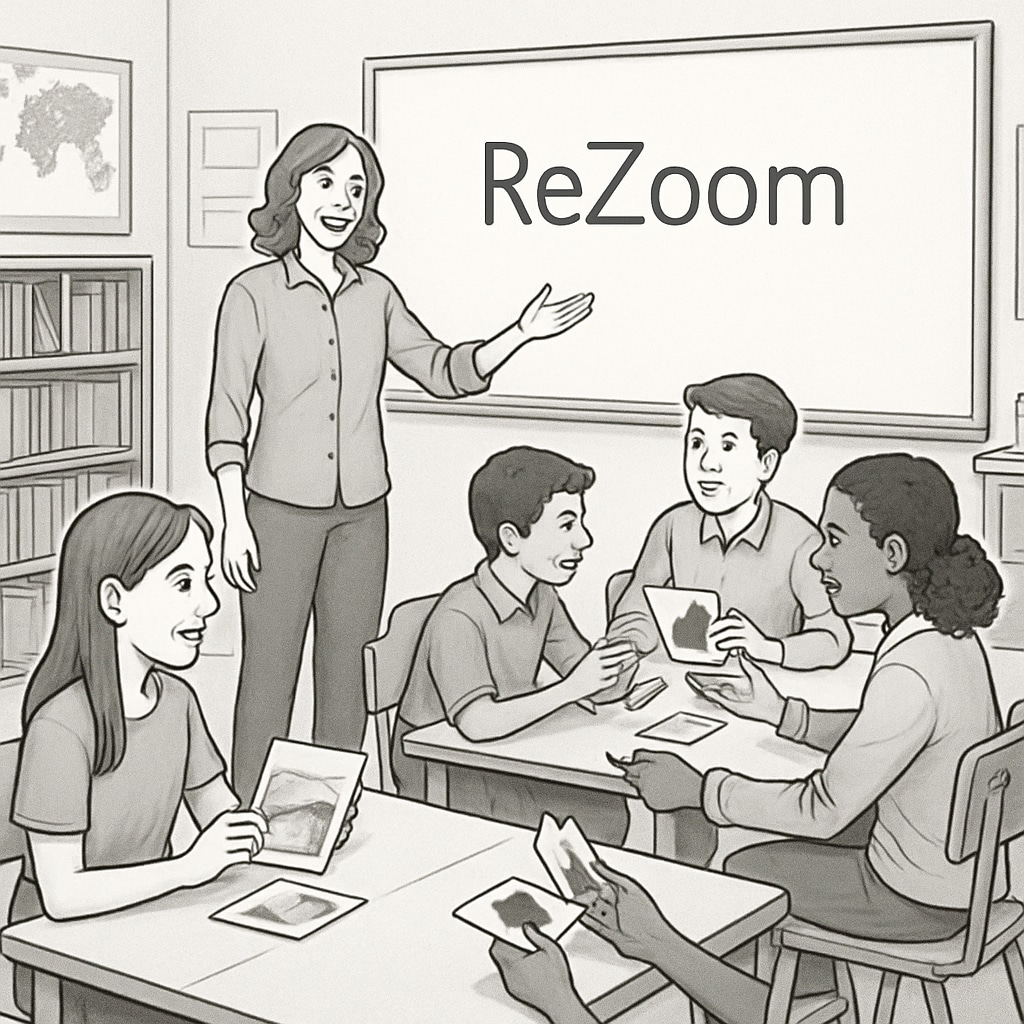Zoom and ReZoom teaching activities are excellent tools for enhancing classroom engagement and fostering active learning. These activities are particularly well-suited for K12 classrooms, as they cater to diverse learning styles and encourage collaboration. However, mastering the correct sequence and implementation is essential to achieving the desired learning outcomes. In this article, we will explore the proper order for conducting these activities, along with practical tips and best practices to make them more effective. By following this guide, teachers can create more interactive and engaging lessons for their students.
What Are Zoom and ReZoom Activities?
Zoom and ReZoom are visual storytelling activities designed to build teamwork, communication, and critical thinking skills. In the classic Zoom activity, participants are given individual cards that form part of a larger story or sequence. Each card represents a zoomed-in or zoomed-out perspective, and the group must collaborate to arrange the cards in the correct order without showing their cards to one another. ReZoom is a variation of the activity, often involving a reverse sequence, where the team works backward to reconstruct the story.
These activities are based on the books Zoom and ReZoom by Istvan Banyai, which feature intricate illustrations that challenge participants to think about perspective and context. The activities are widely used in classrooms, corporate team-building sessions, and even workshops aimed at improving communication skills.
Step-by-Step Guide to Implementing Zoom and ReZoom Activities
To maximize the benefits of Zoom and ReZoom activities in your classroom, follow these step-by-step instructions:
- Prepare the Materials: Obtain a set of Zoom or ReZoom cards, or create your own based on the books. Ensure that each card is clearly numbered (for the teacher’s reference) to verify the correct sequence during the activity.
- Set the Rules: Explain the rules to the students. Emphasize that they cannot show their cards to others and must use verbal communication to describe their cards.
- Divide the Group: Split the class into small groups to encourage teamwork. Each group should have an equal number of cards distributed among its members.
- Facilitate Communication: Encourage students to ask questions, listen actively, and provide clear descriptions of their cards. This step is essential for piecing together the sequence.
- Verify the Sequence: Once the group believes they have arranged the cards correctly, review the order as a class. Discuss any discrepancies and reflect on the strategies used.
By following these steps, teachers can ensure a smooth and productive activity that benefits all participants.

Best Practices for Zoom and ReZoom Activities
Implementing these activities effectively requires more than just following the steps. Here are some best practices to ensure success:
- Adapt to Your Classroom: Tailor the activity to suit the age and skill level of your students. For younger children, consider using fewer cards or simpler sequences.
- Encourage Reflection: After completing the activity, facilitate a class discussion to reflect on what worked, what didn’t, and what could be improved.
- Integrate with Curriculum: Tie the activity to a lesson or theme you’re teaching. For example, use it during a unit on storytelling, perspective, or communication skills.
- Promote Inclusivity: Ensure that all students feel included and have a chance to contribute. Assign roles if necessary to balance participation.
These tips will help create a more inclusive and meaningful learning experience.
Common Challenges and How to Overcome Them
While Zoom and ReZoom activities are engaging, they can present certain challenges. Here’s how to address them:
- Communication Barriers: Some students may struggle to articulate their thoughts. Encourage them to practice descriptive language and provide examples to guide them.
- Group Dynamics: In some cases, dominant students may take over the activity. Set clear expectations for equal participation and monitor group discussions.
- Time Management: These activities can be time-consuming. Allocate a specific time frame and remind students to stay focused on the task.
By anticipating these challenges, teachers can proactively create a smoother experience for their students.

Why Use Zoom and ReZoom in the Classroom?
The benefits of Zoom and ReZoom activities extend far beyond the classroom. They help students develop essential skills such as:
- Critical Thinking: Students must analyze and synthesize information to determine the correct sequence.
- Collaboration: The activity fosters teamwork and mutual understanding as students work toward a common goal.
- Perspective-Taking: By focusing on zoomed-in and zoomed-out perspectives, students learn to consider different viewpoints.
- Communication Skills: Verbal descriptions and listening are key components of the activity, improving students’ ability to express themselves clearly.
These transferable skills are valuable in academics, future careers, and everyday life.
In Summary: Zoom and ReZoom activities are versatile, engaging, and highly effective tools for K12 teachers. By following the correct implementation steps, using best practices, and addressing potential challenges, educators can create dynamic learning experiences that resonate with students.
External Resources: For more information on Zoom and ReZoom activities, visit Zoom on Wikipedia or explore Britannica’s education resources.


